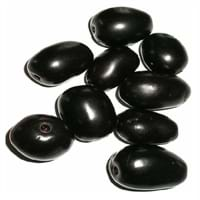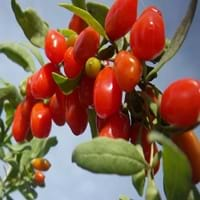Health Benefits
Cancer prevention, Heart care, Increase in haemoglobin, Regulates Blood Sugar, Ulcer prevention
Anti-oxidant properties, Eye care, Helps in cartilage regeneration, Regulates Blood Sugar, Treatment of osteoarthritis
General Benefits
Boosts immune system, Digestive aid, Fights against infections, Strengthens bones
Boosts immune system, Digestive aid
Skin Benefits
Brightens and lightens complexion, Skin cleansing, Skin rejuvenation, Treatment of acne, Treatment of dark spots
Anti-aging benefits, Reduces wrinkles, Treatment of skin diseases
Hair Benefits
Promotes longer and healthier hair, Protects hair
Protects hair, Regulates hair growth
Allergy Symptoms
Abdominal pains, NA
Anaphylaxis, Itching, Sneezing, Wheezing
Side Effects
Decrease in blood sugar levels, Allergic reaction, Throat irritation, Throat swelling, Possibly unsafe during pregnancy
May interact with some drugs
Best Time to Eat
As a snack in the late afternoon, Don't consume at night and before bed, Eat the fresh ones, avoid mixing with any other foods, don't eat after meal., Morning time (before lunch), Strictly avoid empty stomach
Any time except an hour after meal, Don't consume at night and before bed
Vitamin B5 (Pantothenic Acid)
Not Available
Vitamin B9 (Folic acid)
Not Available
Vitamin C (Ascorbic Acid)
Vitamin E (Tocopherole)
Not Available
Vitamin K (Phyllochinone)
Not Available
Lutein+Zeaxanthin
Not Available
Calories in Fresh Fruit with Peel
Calories in Fresh Fruit without Peel
Not Available
Not Available
Calories in Frozen Form
Not Available
Calories in Dried Form
Not Available
Calories in Canned Form
Not Available
Not Available
Type
Tree fruit, Tropical
Berry
Season
Monsoon, Summer
Autumn
Varieties
Ram Jarnun and Paras
No Types
Color
Black, Magenta, Purple
Scarlet red
Inside Color
Purple
Orange
Taste
Astringent, Sweet
Slightly bitter, Tart
Origin
Bangladesh, India, Indonesia, Malaysia, Nepal, Pakistan, Philippines, Sri Lanka
Unknown
Soil Type
Loam, Sandy loam, Well-drained
Well-drained
Climatic Conditions
Humid, Rainfall
Cold, Hot
Facts about
- Wood of jambul tree is water-resistant wood & is used in railroads and to implement engines in the well.
- In Indian mythology, it is said that Jambul fruit was revered by Buddha.
- Jambul has a huge importance in Ayurveda.
- Study says a man named Li Qing Yuen used to eat goji berries daily and lived for 252 years.
- They are also known as wolfberries in India & China.
- This fruit is used for spiritual purposes at many places.
Other Countries
Bangladesh, Indonesia, Malaysia, Nepal, Pakistan, Philippines, Sri Lanka
Canada, France, India, United States of America
Top Importer
Not Available
United States of America
Botanical Name
Syzygium cumini
Lycium barbarum
Synonym
Eugenia cumini
Wolfberry
Subkingdom
Tracheobionta
Tracheobionta
Division
Magnoliophyta
Unknown
Class
Magnoliopsida
Unknown
Subclass
Rosidae
Asteridae
Family
Myrtaceae
Solanaceae
Species
S. cumini
L. barbarum
Generic Group
Not Available
Not Available
Compare Jambul and Gojiberry
It is important compare Jambul and Gojiberry as both the fruits have a different nutritional value. Their comparison can be done on the basis of their vitamin and mineral content, calories, benefits as well as characteristics, making it easier for us to choose the best fruit for our diet. Their general health benefits are as follows:
Jambul Benefits: boosts immune system, digestive aid, fights against infections and strengthens bones.
Gojiberry Benefits: boosts immune system and digestive aid.
Fruits are also used as a remedy for various hair problems. The hair benefits of Jambul are: promotes longer and healthier hair and protects hair and hair benefits of Gojiberry are: protects hair and regulates hair growth. Some fruits are known to cause allergic reactions. The allergy symptoms of first fruit are: abdominal pains and na and the symptoms of second fruit are: anaphylaxis, itching, sneezing and wheezing. Get sorted Jambul vs Gojiberry comparison with the help of fruit comparison tool by fruitvs.com.









